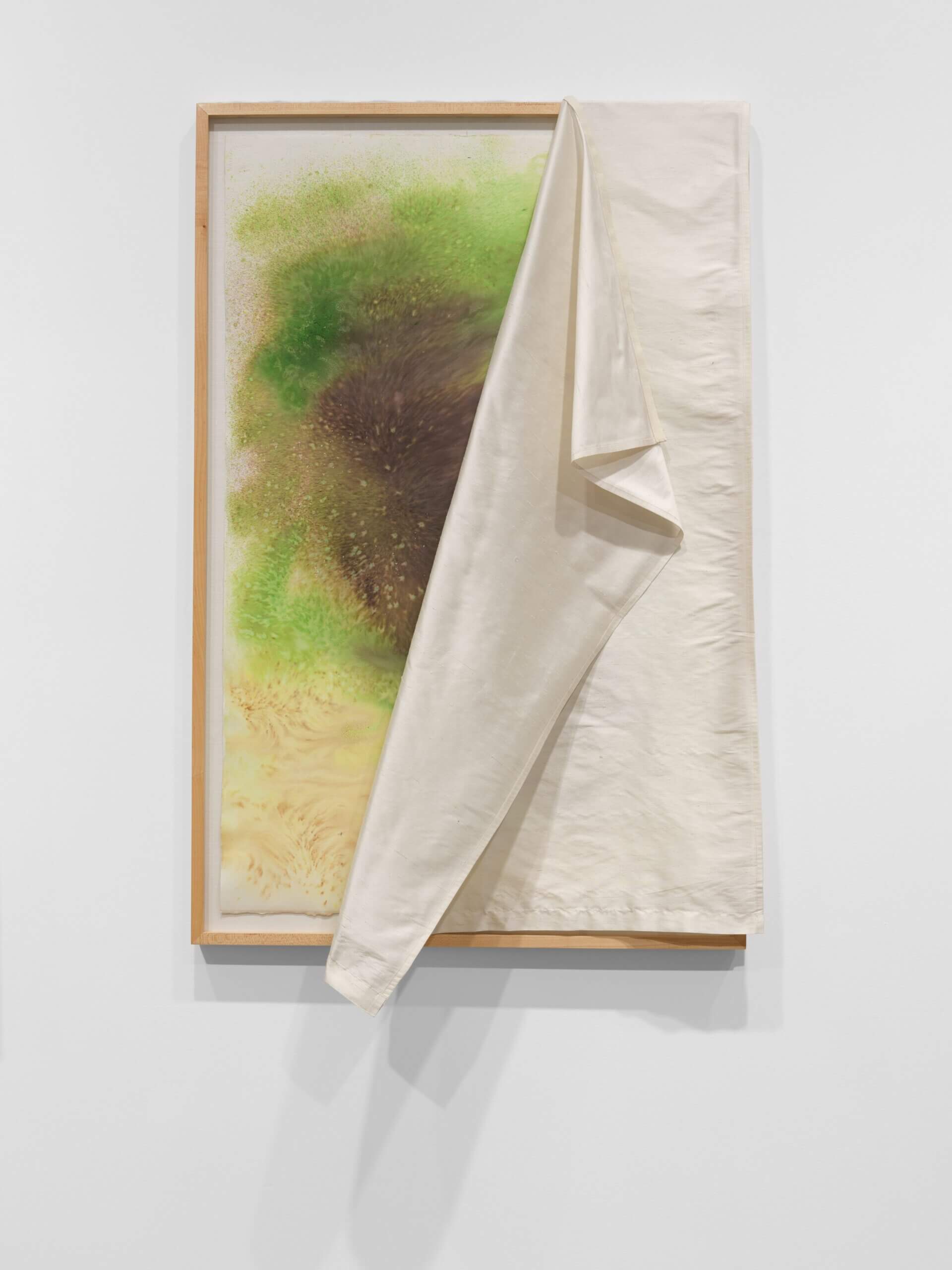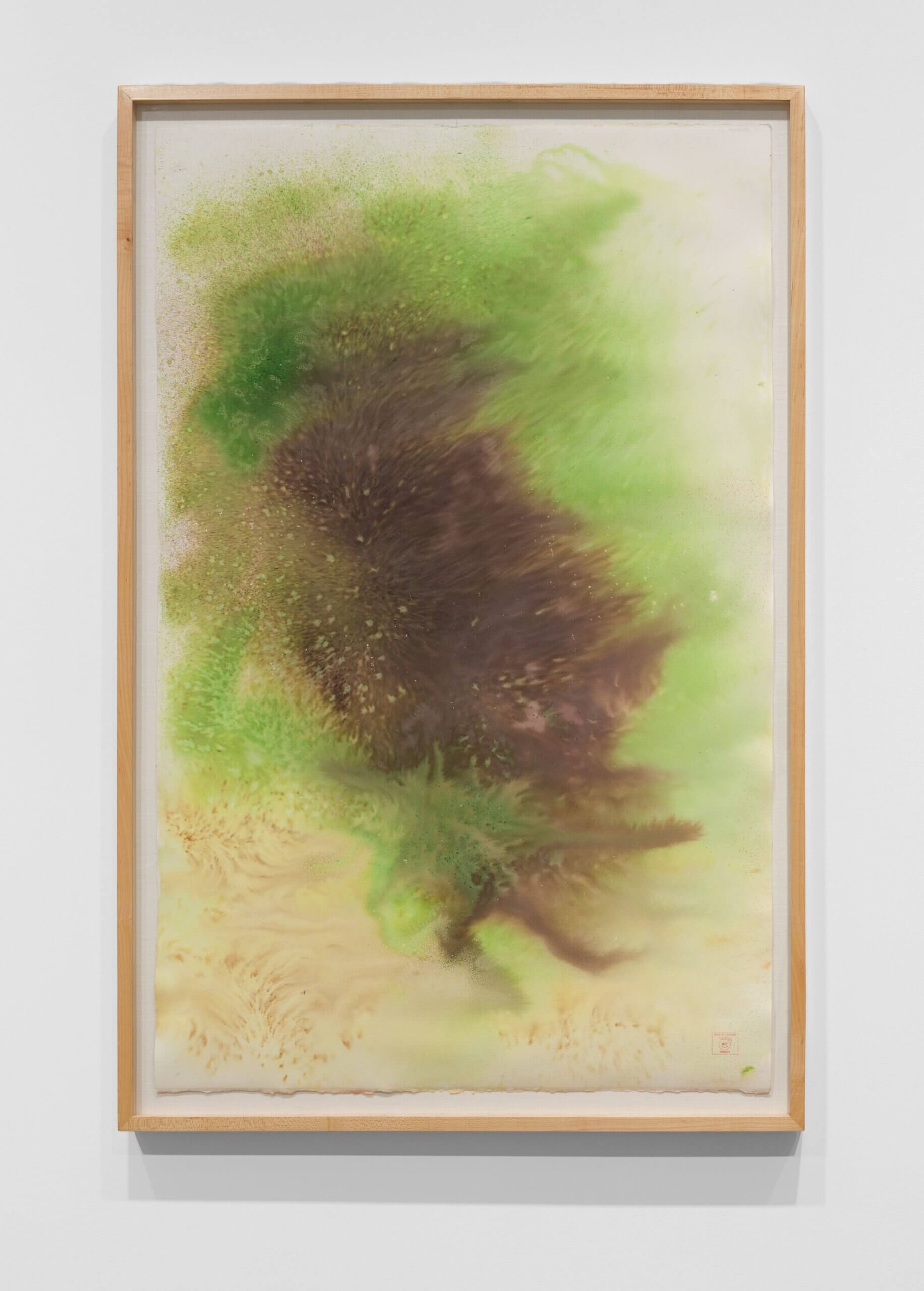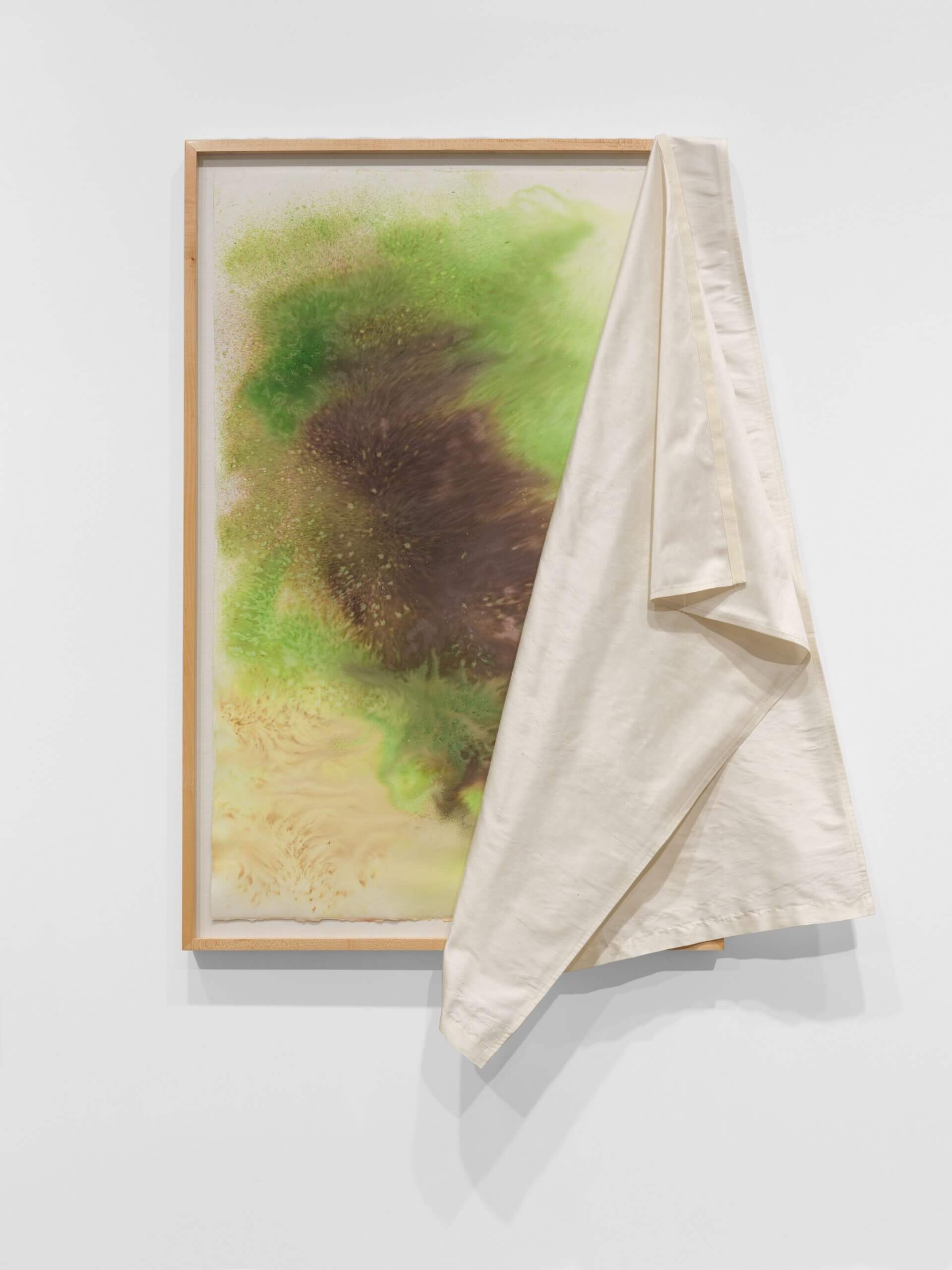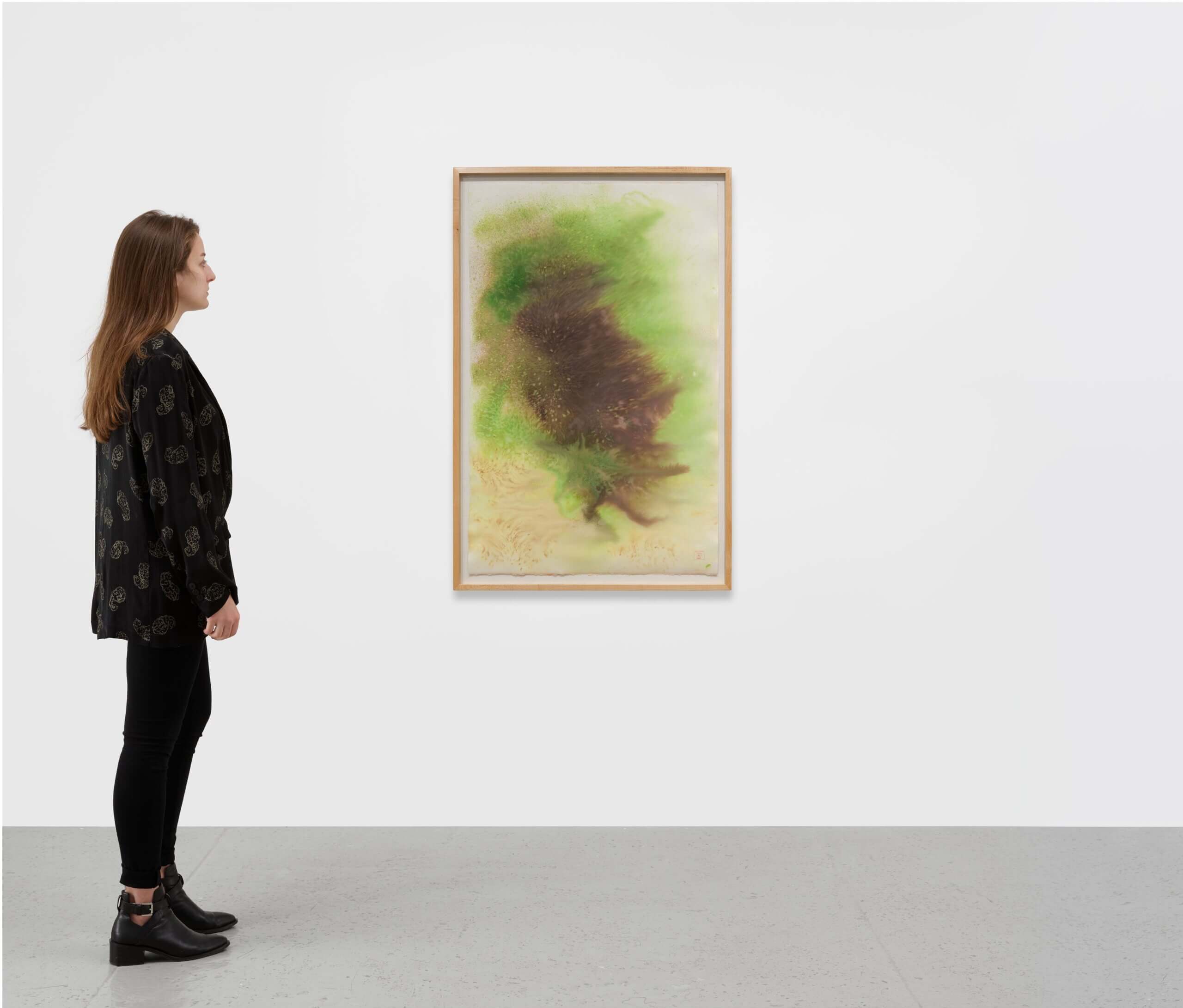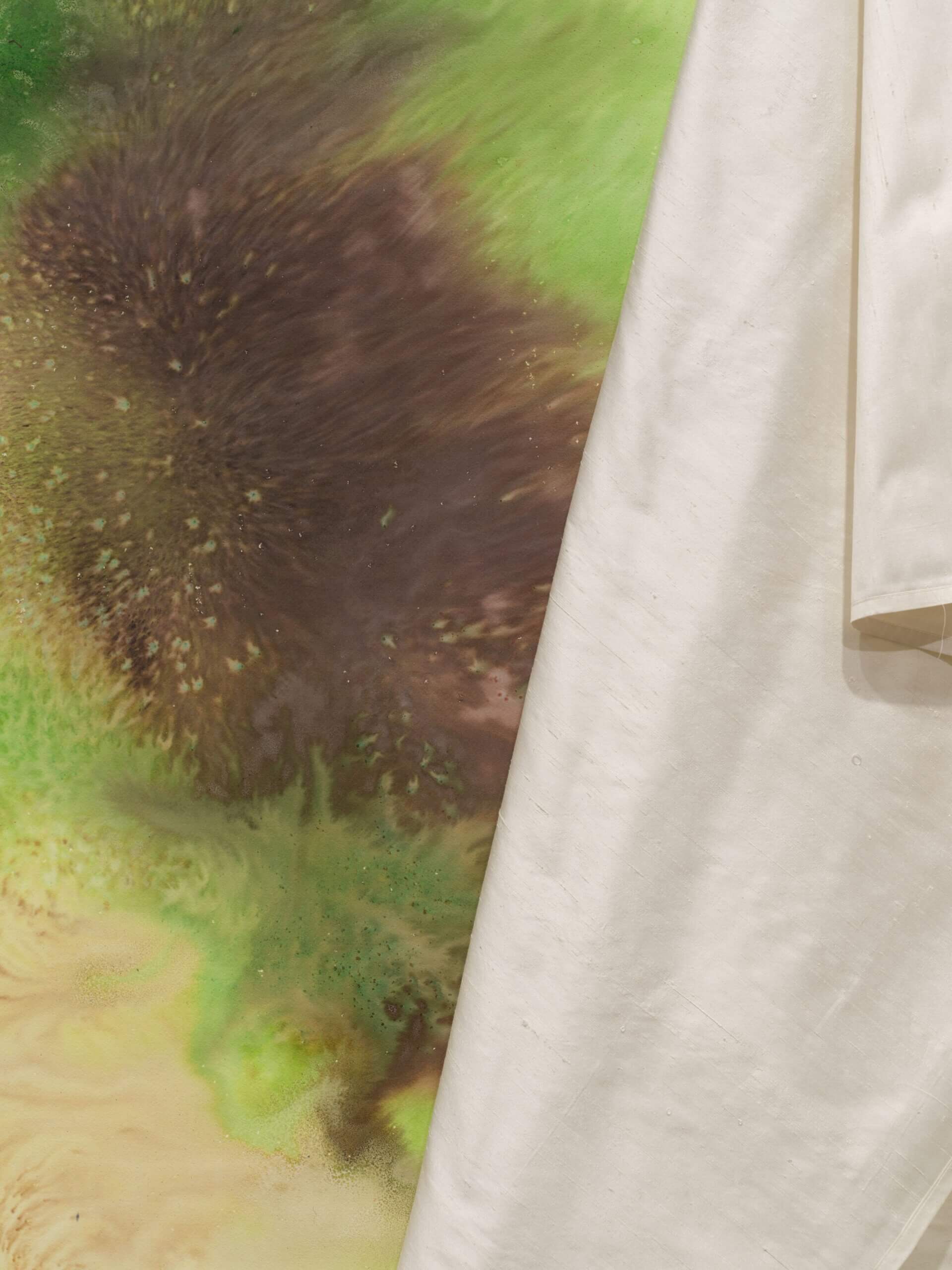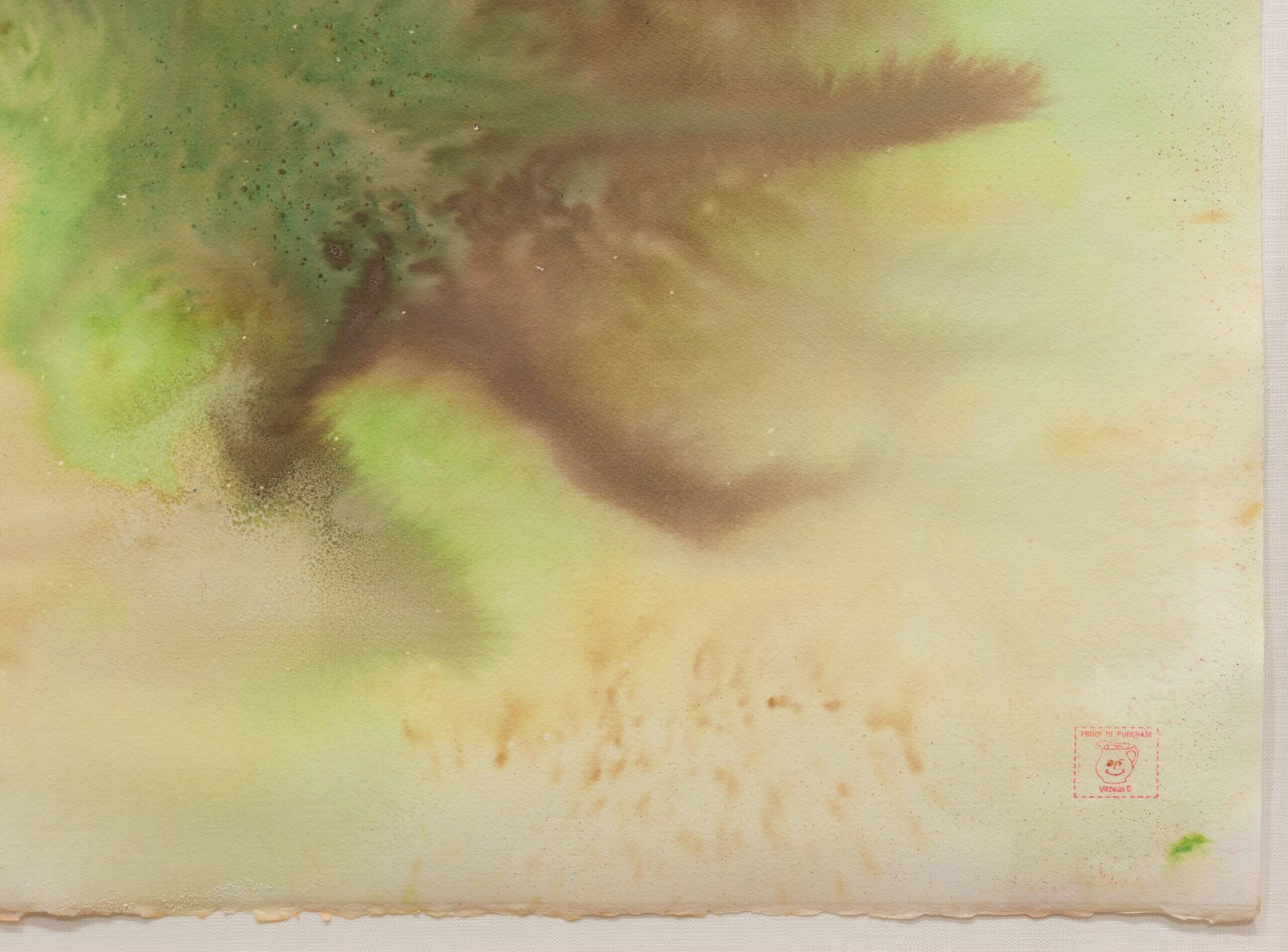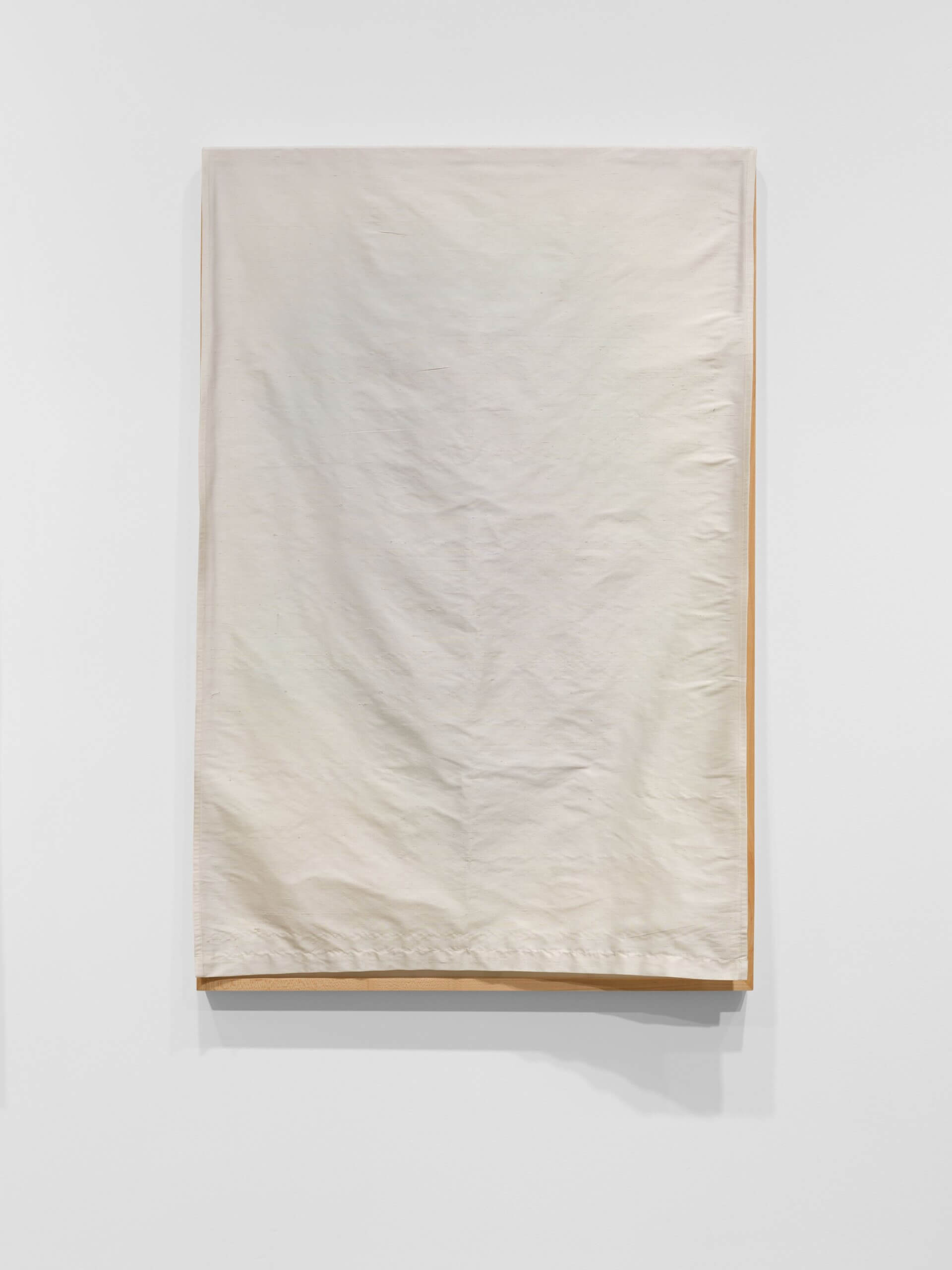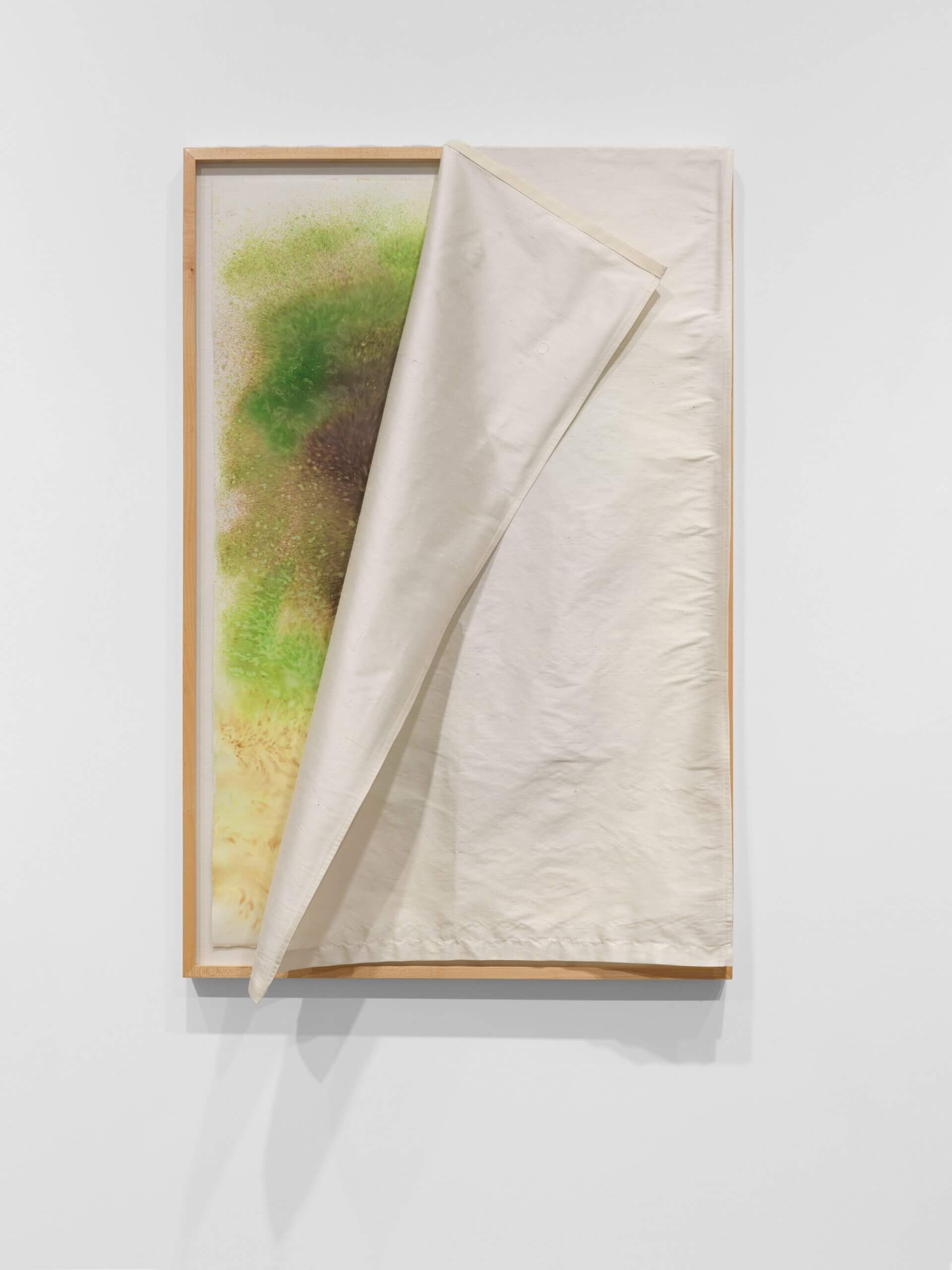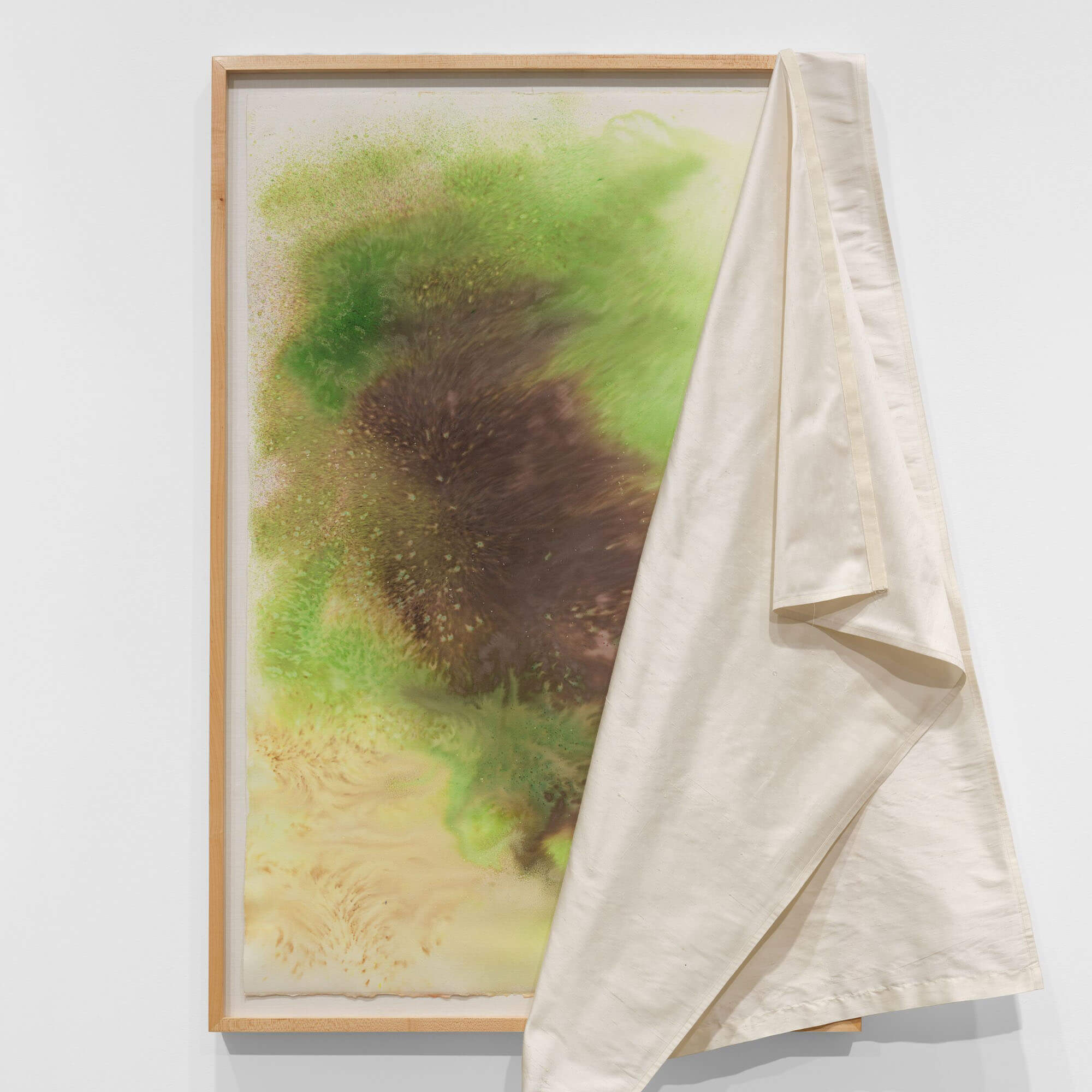
David Hammons
Untitled (Kool-Aid Drawing)
Untitled (Kool-Aid Drawing)
2003 Kool-Aid on paper, silk cloth cover 102.9 x 65.4 cm / 40 ½ x 25 ¾ in 111.1 x 73 x 4.1 cm / 43 ¾ x 28 ¾ x 1 ⅝ in (framed)
David Hammons has been a central, if wilfully elusive, fixture in the contemporary art world for almost fifty years. The myriad sources for his heterogeneous practice range from conceptual art to Arte Povera and jazz. Hammons incorporates found objects into many of his evocative works, sourcing much of his material from Harlem, where he has lived and worked since 1974. Hammons at once elevates ephemera to the level of art and questions the superior status of the conventional art object.
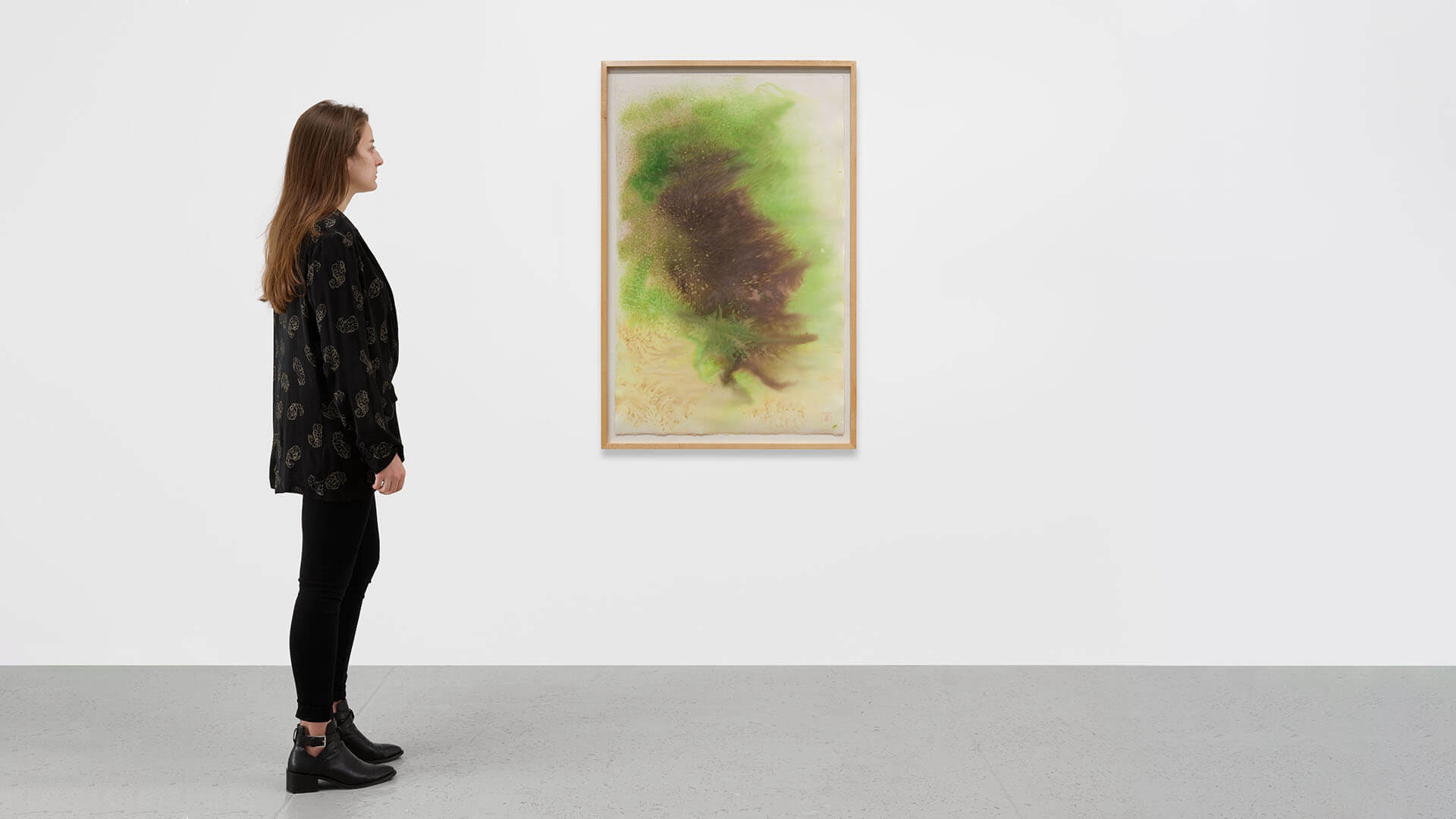
‘Untitled (Kool-Aid Drawing)’ (2003) presents a brightly colored and energetic composition, which cheekily lampoons the painterly bravado of Abstract Expressionism. The transparent wash of the work brings to mind the paintings of Helen Frankenthaler, whose soak-stain technique influenced Color Field artists including Morris Louis and Kenneth Noland. Here, Hammons satirizes the value placed on—and the mythology surrounding—the Abstract Expressionists’ painterly approach, demonstrating that he can produce the same outcome using cheap, mass-produced, and generic pigment, available at a grocery shop.
‘Abandon any art form that costs too much. Insist that it’s as cheap as possible is number one and also that it’s aesthetically correct. After that anything goes.’—David Hammons [1]
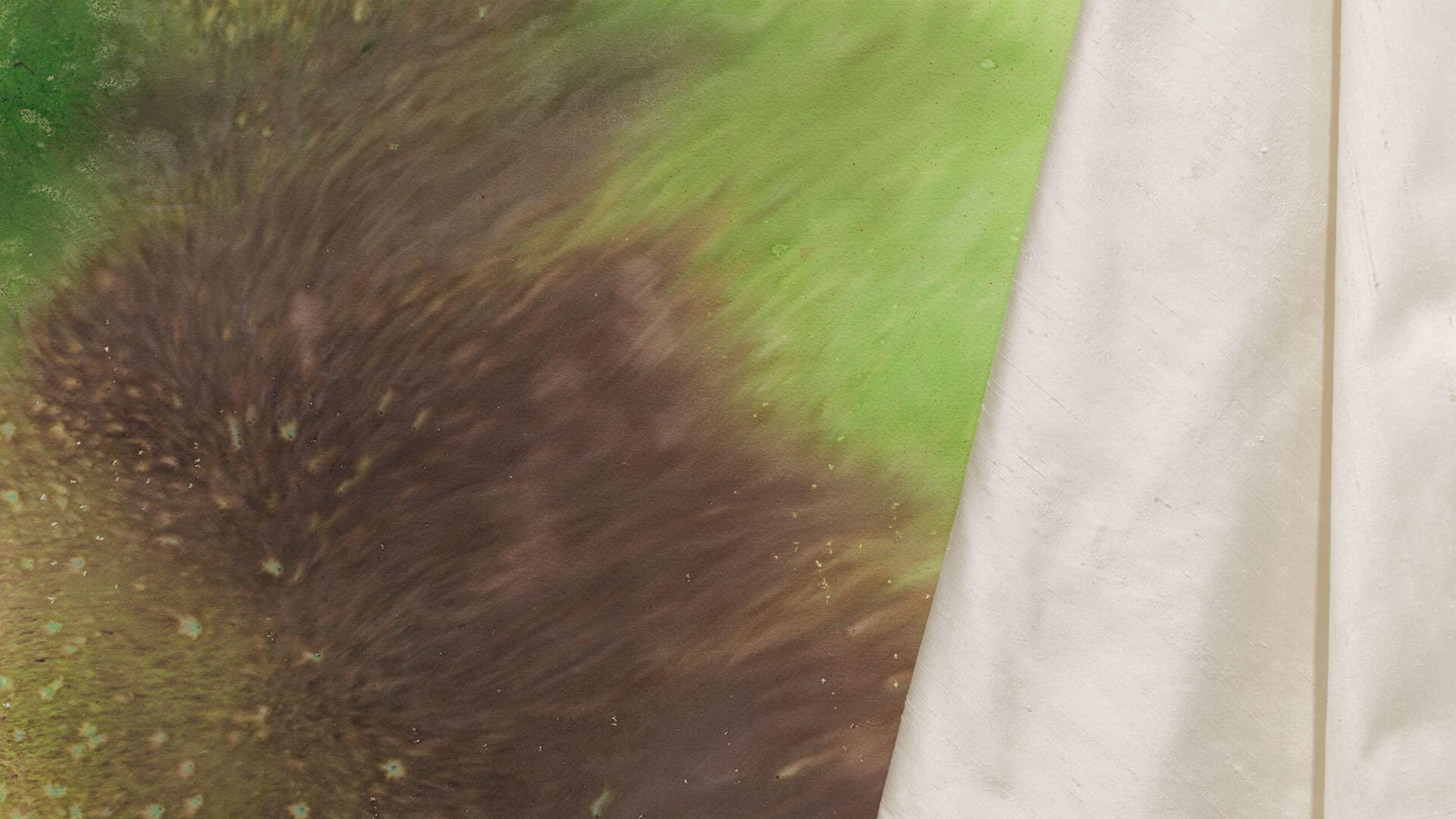
Employing Kool-Aid mix as pigment, Hammons creates a mesmerizing amalgamation of earthy browns and bright greens. An icon of the Kool-Aid man, mascot of the inexpensive drink preparation, is stamped on the lower right corner of the work. The use of Kool-Aid powder obliquely references both the stereotype connecting the popular soda and Black culture and the phrase ‘drinking the Kool-Aid’, derived from the 1978 Jonestown deaths. [2]
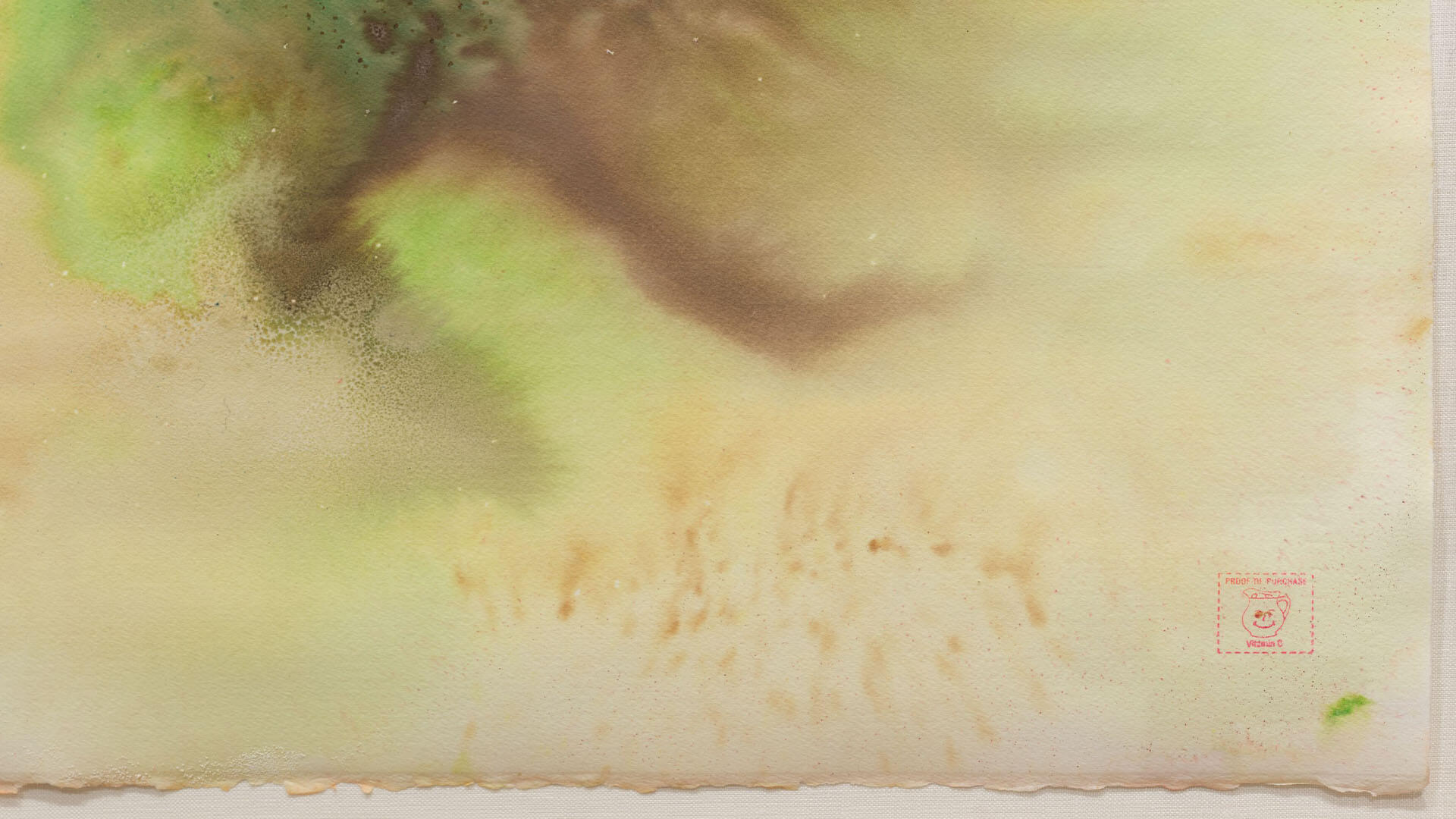
‘Untitled (Kool-Aid Drawing)’ demonstrates Hammons’ extensive, profound engagement with the theme of invisibility. The drawing, which may be shrouded with a raw silk cloth, might disappear. When another work from the Kool-Aid series was displayed at the Museum of Modern Art in 2012, visitors had to book appointments and enter the museum via a separate entrance in order to view the drawing unveiled. By blurring the lines of perception, omission and access, Hammons’ drawing brings to the fore questions of politics, art history and misrecognition.
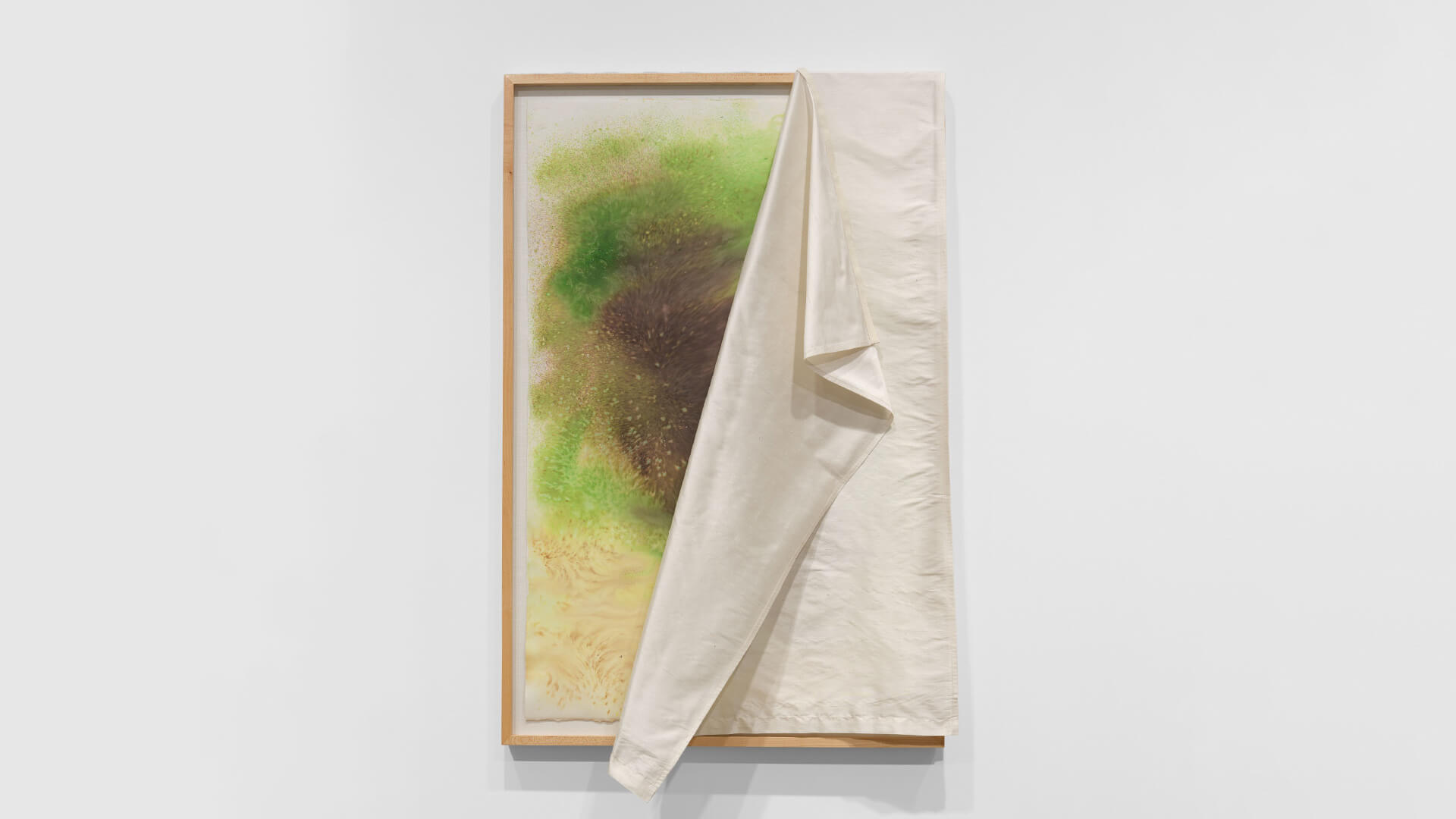
Withheld from the viewer’s gaze, ‘Untitled (Kool-Aid Drawing)’ demands time and attention to extract teasing glimpses of the stained drawing. Moreover, the use of the curtain calls to mind the custom of valuable or delicate works being concealed by art conservators to protect them from damage, while imbuing the work with a strong physical and three-dimensional presence, situating ‘Untitled’ ambiguously between drawing and sculpture.
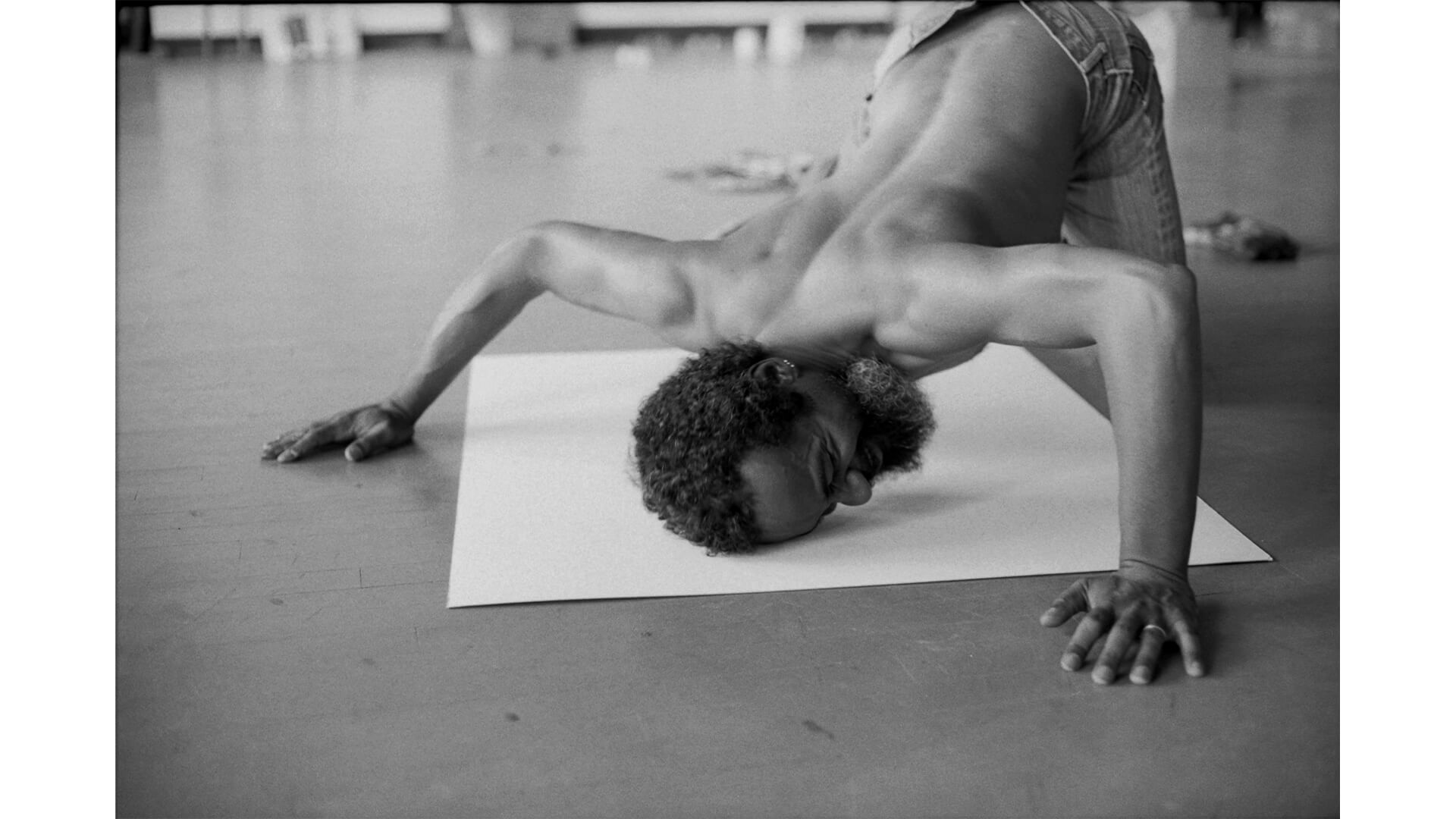
Recognized for his incisive cultural commentary and tongue-in-cheek humor, Hammons creates works of art that are simultaneously enigmatic and illuminating. Exemplary for Hammons’ subversive oeuvre, ‘Untitled (Kool-Aid Drawing)’ challenges traditional methods of art-making and -viewing, prompting spectators to reconsider the role and value of art. Hammons deftly condenses these central considerations in this dynamic and striking work.
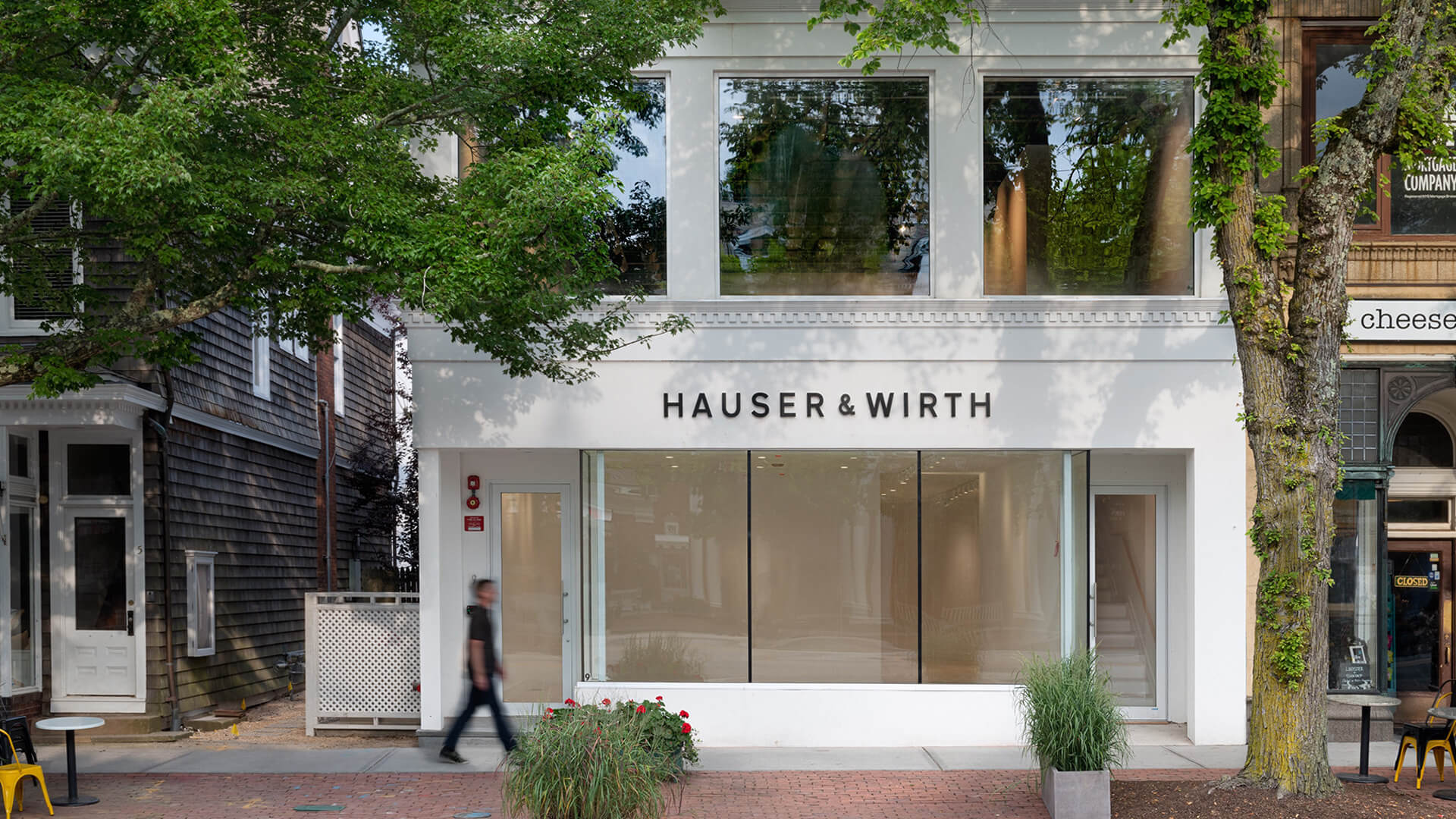
On view in Southampton
‘Untitled (Kool Aid Drawing)’ by David Hammons is on view by appointment at Hauser & Wirth Southampton, alongside outdoor sculptures by Camille Henrot and our exhibition of works by Luchita Hurtado. Please visit our location page or contact our team to learn more.
Images: David Hammons, Untitled (Kool-Aid Drawing), 2003 © David Hammons. Photo: Thomas Barratt; David Hammons making body prints in his Slauson Avenue studio, 1974. Photo: Bruce W. Talamon © Bruce W. Talamon. Courtesy Roberts & Tilton
[1] David Hammons quoted in conversation with Kellie Jones, Real Life Magazine, No. 16 (Autumn 1986), p. 240. [2] In 1978 in Jonestown, Guyana, over 900 people died from a mass murder-suicide by adding cyanide to Kool-Aid and drinking under the direction of cult leader Jim Jones and his Peoples Temple.
